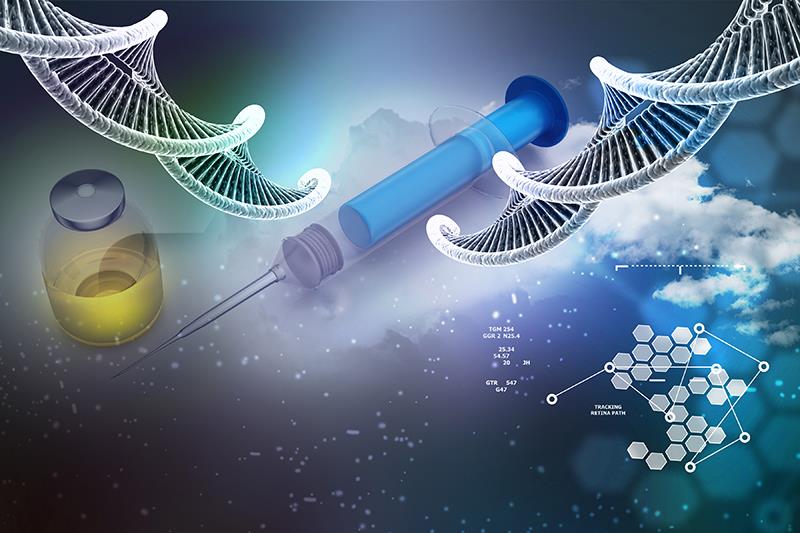Novel personalized cancer vaccine may delay relapse in HNSCC





TG4050, a novel viral-based personalized cancer vaccine, showed promise in a phase I trial presented during a late-breaking poster presentation at AACR 2024. The investigational vaccine induced polyepitopic immune responses against private neoantigens in resected HPV-negative head and neck squamous cell cancer (HNSCC).
Individuals with locoregional HNSCC have a high relapse risk following surgery, noted Dr Olivier Lantz from Institut Curie, Paris, France, in the media release. [https://www.aacr.org/about-the-aacr/newsroom/news-releases/investigational-personalized-vaccine-provides-clinical-benefit-for-some-patients-with-resected-head-and-neck-cancers] Furthermore, available treatments fall short against relapsed disease.
“A therapeutic vaccine tailored to each patient’s unique tumour may lead to strong immune responses, which could eliminate any minimal residual disease that may eventually lead to disease relapse,” said Lantz.
“TG4050 [utilizes a non-pathogenic form of poxvirus that] encodes up to 30 patient- and tumour-specific sequences bearing in-silico predicted class I and class II epitopes. TG4050 may prime an adaptive immune response against tumour antigens and prevent relapse in resected HNSCC,” Lantz and colleagues noted.
The study included 33 patients with stage III or IV HPV-negative squamous cell carcinoma of the oral cavity, oropharynx, hypopharynx, or larynx who have undergone surgery and standard adjuvant radiation and chemotherapy. Participants were randomized 1:1 to receive TG4050 either immediately after completion of standard treatments (arm A) or upon disease relapse (arm B). The vaccine was administered subcutaneously weekly for 6 weeks, then Q3W (total of 20 doses). [AACR 2024, abstract LB401]
After a median follow-up of 16.2 months, none of the evaluable patients in arm A experienced disease relapse, while three did in arm B at 6.2, 8.8, and 18.5 months.
Activated neoantigen-specific T cells
Among the 17 evaluable vaccinated patients (16 in arm A and one in arm B) who were assessed for immune responses, 16 had evidence of activated neoantigen-specific T cells.
The T-cell responses were mostly de novo (ie, undetectable prior to vaccine; 82 percent) or amplified pre-existing responses (18 percent). Given that the majority of the responses were absent before receipt of the vaccine, it suggests that these T-cell responses were induced by the vaccine, the investigators pointed out.
Furthermore, these neoantigen-specific T cells grew rapidly in number upon vaccination, remaining stable up to 7 months post vaccination. These also had an effector memory phenotype as observed via cytometric characterization, implying its potential to possess antitumour activity.
“TCR sequencing of blood T cells in five patients evidenced expansion of TIL clonotypes. Finally, the most expanded vaccine specific CD8 T cells found in the blood of two patients represented oligoclonal expansions expressing an effector phenotype,” Lantz and colleagues reported. “Thus, both TCR analyses suggest expansion of clinically relevant T cell clones after TG4050 treatment.”
Promising preliminary data
Adverse events associated with the vaccine were mild to moderate, with the most common being injection-site reaction. “Our findings indicate that TG4050 is safe and promotes an immune response against several neoantigens in most patients,” Lantz said.
“[Despite the small population and short follow-up,] we are really excited by these preliminary data, as well as by the body of evidence that is being built by the community in favour of neoantigen-based vaccines,” added Lantz.
“Studies like ours are demonstrating the potential of individualized neoantigen-based therapeutic vaccines to be a part of tomorrow’s standard of care,” he said.
“[Overall, vaccination with TG4050] was safe and induced polyclonal immune responses against vaccine targets alone or during concurrent treatment with immunotherapy. The association of vaccine treatment with lower rates of relapse warrants further clinical confirmation in this indication,” the investigators concluded.